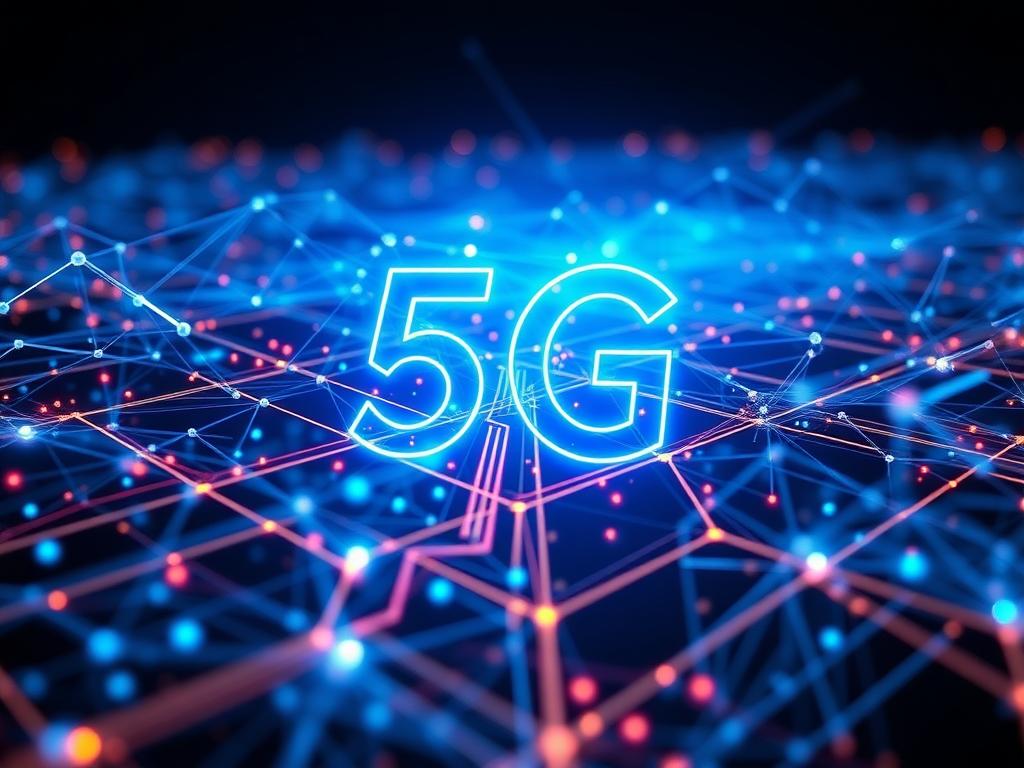The introduction of 5G technology is a significant milestone in the evolution of wireless communication networks. This next-generation network promises to deliver ultra-low latency, high-speed connectivity, and enhanced mobile broadband (eMBB) services. This article aims to provide an in-depth analysis of the scientific and economic aspects of 5G networks, focusing on massive IoT, 5G spectrum, network slicing, edge computing, millimeter wave (mmWave), and the 5G core network.
5G networks are designed to support a wide range of services, including eMBB, massive IoT, and critical communications. The network architecture consists of the user equipment, radio access network (RAN), and the 5G core network. The RAN and the 5G core network work together to provide ultra-low latency, high-speed connectivity, and network slicing capabilities.
The 5G spectrum is divided into several bands, including the low-band, mid-band, and high-band. The low-band spectrum provides wide coverage but has limited capacity, while the mid-band spectrum offers a balance between coverage and capacity. The high-band spectrum, also known as the mmWave spectrum, provides high capacity but has limited coverage. The 5G network uses a combination of these bands to provide optimal coverage, capacity, and latency.
Massive IoT refers to the connection of a large number of devices to the internet. 5G networks are designed to support massive IoT by providing low-power wide-area (LPWA) connectivity. LPWA connectivity enables devices to communicate with the network using minimal power, resulting in longer battery life and lower costs. Massive IoT has numerous applications in various industries, including manufacturing, transportation, and healthcare.
eMBB is a service that provides high-speed connectivity to mobile devices. 5G networks support eMBB by providing high-speed data rates, low latency, and high capacity. eMBB has numerous applications, including video streaming, online gaming, and virtual reality.
Network slicing is a technique that allows multiple virtual networks to operate on a single physical network. Each virtual network, or slice, can be customized to provide specific services and capabilities. Network slicing enables 5G networks to support a wide range of services, including eMBB, massive IoT, and critical communications.
Edge computing is a technique that involves processing data closer to the source, rather than in a centralized data center. Edge computing reduces latency, improves reliability, and reduces the amount of data that needs to be transmitted over the network. 5G networks support edge computing by providing high-speed connectivity and low latency.
mmWave is a high-frequency spectrum that provides high capacity but has limited coverage. 5G networks use mmWave to provide high-speed connectivity in dense urban areas. mmWave requires the use of small cells, which are low-power base stations that provide coverage in a limited area.
The 5G core network is the heart of the 5G network. It provides the control plane functions, including authentication, authorization, and accounting. The 5G core network also provides the user plane functions, including data forwarding and packet processing. The 5G core network is designed to be highly scalable, flexible, and programmable, enabling it to support a wide range of services and capabilities.
« Unleashing the Potential of 5G: A Comprehensive Look at the Technological and Economic Impact of Next-Generation Wireless Communication Networks »
